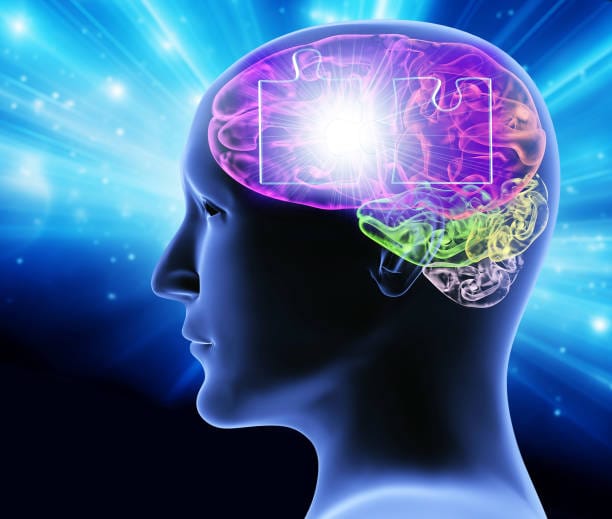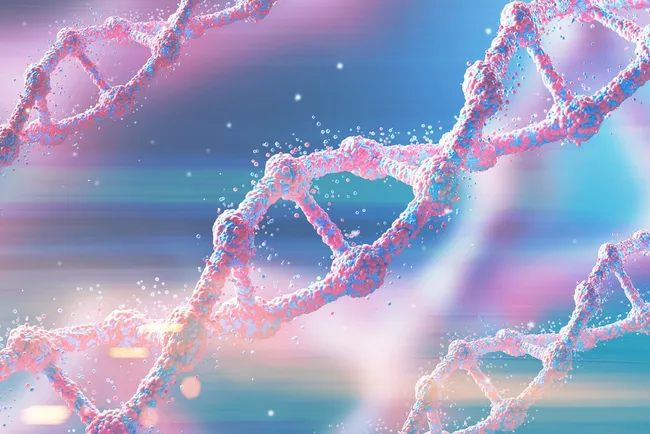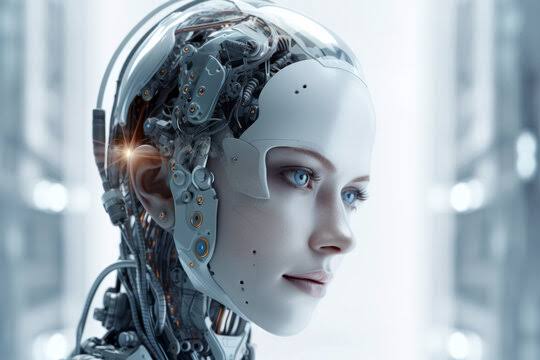From the moment we open our eyes to the world as children, reality floods into us—color, sound, warmth, emotion, memory. We do not simply exist; we experience. A stone rests on the ground, but it does not dream. A river flows, but it does not feel its journey. A machine computes, but it does not wonder about its own existence. Yet here we are—thinking, feeling, questioning. This silent miracle, this undeniable fact of awareness, is what we call consciousness.
Consciousness is not just another topic in science; it is the stage upon which all science is observed. It is the canvas on which reality paints itself. Without consciousness, there is no joy or sorrow, no love or curiosity, no sense of life itself. It is, as philosophers often say, the most intimate of mysteries. You can doubt the world, you can doubt what others tell you, but you cannot doubt that you are aware. Even doubt itself is an act of consciousness.
And yet, for all its immediacy, consciousness is also one of the greatest unsolved riddles in human history. What is it made of? Why does the brain, an organ of flesh and electricity, give rise to the shimmering theater of thought and feeling? Could consciousness extend beyond the brain, or is it nothing more than neural machinery humming in the dark?
For centuries, poets, philosophers, and scientists have wrestled with these questions. Today, in the age of neuroscience and quantum physics, the mystery of consciousness has become a frontier that may redefine not just science, but what it means to be human.
Ancient Reflections on Awareness
Long before laboratories and brain scans, humans pondered the riddle of their inner life. Ancient Indian sages spoke of Atman, the self, as a spark of ultimate reality. The Upanishads declared that consciousness is not something the self has—it is what the self is. In Buddhism, awareness was seen not as a permanent soul but as a flowing process, ever-changing, like a river of experiences with no fixed center.
In the West, Greek philosophers like Plato and Aristotle wondered about the nature of the soul. Plato believed in a realm of eternal ideas, and consciousness was our glimpse of this higher world. Aristotle saw the soul as the form of the body, the principle of life and awareness. Centuries later, Descartes famously declared, “I think, therefore I am.” For him, consciousness was proof of existence, the one thing that could not be doubted.
These reflections were not idle speculation; they shaped civilizations, religions, and cultural values. Consciousness was seen as divine spark, eternal essence, or at the very least, the core of individuality. But it was always cloaked in mystery, a phenomenon experienced but never fully explained.
It was not until modern science rose that consciousness began to be treated as a puzzle of biology, a natural process perhaps explainable in the same way as digestion or gravity. Yet even as science advanced, consciousness refused to be reduced so easily.
The Brain and Its Shadows
The 20th and 21st centuries brought dazzling insights into the brain. Neurons, those tiny cells sending electrical and chemical signals, were found to be the building blocks of thought. Networks of billions of neurons created patterns that corresponded to perception, memory, decision, and emotion. By scanning the brain with technologies like fMRI, scientists could watch as regions lit up when a person imagined music, solved a math problem, or remembered their childhood.
And yet, an unsettling gap remained. Brain activity could be measured, but the experience of being conscious could not be found in the signals. Electrodes could detect the firing of neurons when someone tasted chocolate, but the sweet, velvety feeling of chocolate—the joy of savoring it—remained hidden. This is the so-called hard problem of consciousness, a phrase coined by philosopher David Chalmers.
The easy problems of consciousness—such as how the brain processes visual input or controls movement—may be solvable. But the hard problem asks: why is there something it feels like to see, to taste, to love? Why does the universe not unfold in silence, with no witness? Why should matter, organized into a brain, light up into subjective experience?
Some neuroscientists argue that consciousness is simply what brains do when complexity reaches a certain level. Others believe this is not enough, that something fundamental is missing from our scientific picture. If the brain is like a piano, we can describe the keys and strings, but where does the music of awareness come from?
Consciousness and the Self
One of the most powerful illusions consciousness creates is the sense of a unified “self.” You wake up in the morning and think, “I am the same person as yesterday.” But what is this “I”? Neuroscience suggests the self is not a single thing but a dynamic construction, a story the brain tells itself.
Different brain regions handle memory, language, emotions, and bodily sensations. Together they create the seamless feeling of a self moving through time. But experiments show that this self is fragile. Patients with certain brain injuries can lose parts of their identity. Split-brain patients, whose two hemispheres are disconnected, can seem to have two minds inside one skull. Meditation practices can dissolve the sense of self into pure awareness, a state where consciousness remains but the “I” vanishes.
This raises profound questions: if the self is a construction, what then is the true nature of consciousness? Is awareness independent of the self, more fundamental than the personality we cling to? And if the self is an illusion, what does that mean for ideas like free will, responsibility, or even the meaning of life?
Consciousness and the Physical World
Physics, too, has been drawn into the enigma of consciousness. At the microscopic level, quantum mechanics shows a world that does not behave like the solid, objective reality we assume. Particles exist in superpositions until observed. Does consciousness play a role in collapsing probabilities into definite outcomes? Some interpretations suggest so, though others argue this is a misreading.
Still, the strange marriage of consciousness and quantum physics fascinates thinkers. Could awareness itself be woven into the fundamental fabric of reality, not just an accident of brains? Panpsychism, an ancient idea now revived by some philosophers, proposes that consciousness might be a basic property of the universe, present in all matter to varying degrees. In this view, the cosmos is not dead machinery but alive with awareness, from electrons to galaxies.
Whether or not this is true, the intersection of consciousness and physics reveals that our current models may be incomplete. Perhaps understanding awareness will require a revolution as profound as Einstein’s relativity or quantum theory—a new way of seeing reality itself.
Consciousness in the Age of Machines
The 21st century has added another layer of urgency to the study of consciousness: artificial intelligence. Machines now compose music, diagnose diseases, and even converse in human language. But are they conscious? When an AI says, “I understand,” is there an inner world behind the words, or is it merely a sophisticated echo of human patterns?
This question is not abstract. If one day machines become truly conscious, they would not just be tools but beings with inner lives. They would deserve rights, compassion, and moral consideration. Conversely, if consciousness is uniquely biological, no matter how advanced machines become, they would remain brilliant mimics, forever dark inside.
The rise of AI challenges us to define what consciousness truly is. Is it computation, complexity, self-modeling? Or is it something irreducible, a flame that biology carries but machines cannot kindle? The answers we find—or fail to find—will shape the future of humanity and technology alike.
Consciousness and Death
Every human life is haunted by the question of what happens after death. If consciousness is only the product of brain activity, then it ends when the brain ceases. Awareness vanishes, just as a flame disappears when its fuel is gone. For many, this is a sobering, even terrifying idea.
Yet across cultures, countless people have claimed near-death experiences—visions of light, tunnels, encounters with loved ones. Are these glimpses of another realm, or simply the brain’s final bursts of activity as it shuts down? Science cannot yet give a definitive answer.
What is certain is that consciousness shapes our attitude toward mortality. To be conscious is to know we are alive, but also to know we will die. This double awareness gives human life both its fragility and its depth. Without consciousness, there would be no fear of death, but also no appreciation of the fleeting beauty of life. Perhaps the greatest gift of consciousness is that it allows us to love more fiercely, knowing all is impermanent.
Toward a Science of Consciousness
In recent decades, research into consciousness has accelerated. Theories abound, from Integrated Information Theory, which proposes that consciousness arises from the degree of interconnectedness in a system, to Global Workspace Theory, which sees awareness as the spotlight that integrates information across the brain.
Each theory captures part of the truth, but none yet explains the whole. Consciousness resists being pinned down, like light that is both particle and wave. Perhaps our very methods of science—objective, third-person measurement—are insufficient for a phenomenon that is first-person by nature. Some scientists argue we must combine objective study with subjective reports, bridging inner experience and outer data.
The road ahead is uncertain, but what is clear is that consciousness is no longer a philosophical curiosity. It is a scientific frontier, one that may transform medicine, technology, and even our sense of reality.
Consciousness as the Heart of Meaning
Beyond theories and experiments, consciousness touches something profoundly human: the search for meaning. Without awareness, the universe might exist, but it would be silent, empty, without witness. Consciousness is the light by which existence knows itself.
When you gaze at the night sky and feel wonder, when you fall in love and feel your heart race, when you suffer loss and weep—these are not just neural firings but the essence of being alive. Consciousness makes life luminous.
Perhaps the ultimate lesson of consciousness is humility. We do not yet know why we are aware, nor what awareness truly is. But in that mystery lies beauty. The very fact that we can ask these questions is itself miraculous. Consciousness is both the question and the ground of questioning.
Albert Einstein once said, “The most beautiful experience we can have is the mysterious. It is the fundamental emotion that stands at the cradle of true art and science.” Consciousness is that mystery made flesh. It is the silent wonder at the core of life, the eternal enigma that makes every heartbeat, every thought, every breath precious.






